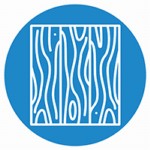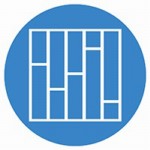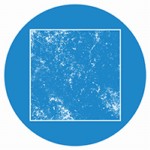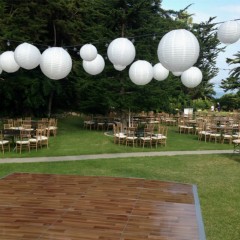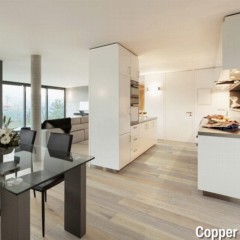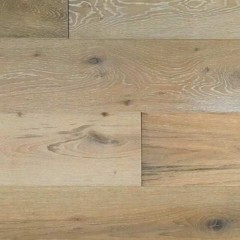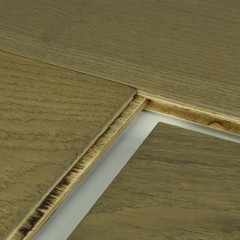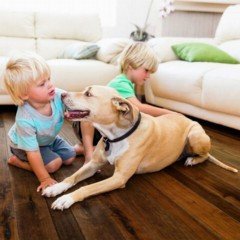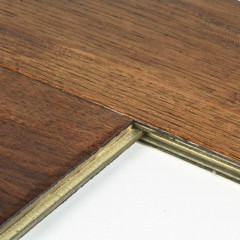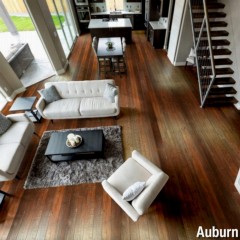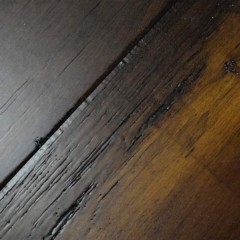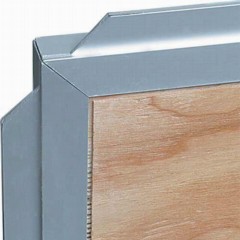Hardwood Flooring Plank Designs
Greatmats offers a wide range of solid and engineered hardwood flooring planks that are far easier to install than most actual hardwood flooring options, such as white oak or red oak.
Engineered hardwood is a rapidly growing type of hardwood flooring as people search for eco-friendly alternatives to natural woods such as Brazilian cherry and other exotic wood species. Even with an engineered design, engineered planks provide the look of real hardwood, thanks to the manufacturer’s impressive designs and the use of real wood in the veneer layer.
This style of hardwood floor differs quite a bit in its look and feel from a laminate or vinyl style of flooring. Vinyl flooring and laminate attempt to simulate the look of wood by using a printed layer along the top.
Our hardwood flooring planks yield a design that looks more like the real thing … because they use the real thing.
Each plank has a plywood base layer that includes a
tongue and groove design to simplify DIY and professional installation. Attached to the top of the plywood base is a veneer layer that contains actual hardwood. The styles of hardwood available in the veneer include wood types such as oak, maple, hickory, birch, and others. This allows low-cost flooring solutions for real hardwood flooring - a welcome alternative to the price tag retailers traditionally put on solid oak flooring.
The layered design of the engineered planks often gets them confused with laminate flooring. However, the real wood veneer surface offers more natural beauty and texture.
The veneer layer completely hides and covers the plywood base, so those looking at this type of floor will never realize that the top layer is a veneer. They will believe they are walking across an actual, solid hardwood floor.
By using
veneer, the manufacturer creates flooring planks that feature the natural wood grain of the selected type of hardwood. The randomness of the wood grain pattern is an important part of any hardwood installation, and the veneer in our planks delivers this look.
Additionally, the veneer layer on some of these planks will have a
hand-scraped texture that contributes to a vintage design. Beveled edges on each piece of veneer further add to the vintage look.
These hardwood flooring planks represent the best way to receive a floor that looks like a solid wood installation without the same level of installation complexity and cost.
Multiple Wood Stain Color Options
After installation, customers will not need to add any wood stain to these prefinished planks. The manufacturer applies the stain to the veneer layer during the manufacturing process, which further simplifies maintenance and installation for the end user.
This is a high-quality finish that will continue to look great for many years to come. The wood stain brings out many different shades and color variations in the veneer layer, which is exactly what happens with solid hardwoods.
Most planks will have a variety of colors, including dark browns, light browns, and reddish browns, available in the wood stains. Some models of the engineered hardwood planks will offer shades of black, gray, and white as well. All of the stains allow the natural wood grain to show through beautifully.
Some of these models will have a high-gloss finish, while others will feature a low-gloss finish. If the planks will appear in an area that receives constant sunlight, having a UV-protective coating in the veneer layer will be beneficial.
Construction of Engineered Wood Planks
The design of these planks ensures a long-lasting product. The plywood base layer consists of a thickness between 1/4 and 3/4 inch, while the veneer layer is usually 1/8 inch or less. The majority of the weight and thickness of the plank reside in the plywood, which gives the plank impressive stability. You can also find a nice variety of narrow and wide plank options. Some models even have both.
Many models of these planks make use of a tongue and groove design on the edges of the plywood layer. Installers will slide the pieces together using the tongue and groove design. Installers will often need to attach the planks to the subfloor using staples or cleats, although some models of planks work as a floating floor design.
Depending on the model selected, customers will have multiple choices for the width of the planks, usually between 4 and 8 inches. In most cases, all of the planks within a single carton will have the same width.
Pieces within a carton of planks commonly have random lengths. This allows the installer to easily stagger the ends of the planks from row to row during the flooring project. Random lengths of planks are a common feature of an actual hardwood floor, so this design aspect is an important part of creating a realistic final layout.
Easy to Maintain and Clean Hardwood Floors
Cleaning the surface of the planks only requires a little bit of work on a regular basis. To remove dry debris, customers can sweep the floors with a broom or dry mop. A vacuum cleaner that does not have a beater bar is another option for daily cleaning.
For more stubborn stains, customers can use a wood floor cleaning product with a mop. Avoid leaving spilled water or excessive cleaning solution on the veneer layer, as this could lead to staining.
Unlike an actual solid wood floor, there is no need to sand the surface of engineered wood floors several years down the road. Refinishing does not need to happen in future years, either. If desired, however, customers can add a urethane finish coat to the top layer, depending on the model of flooring plank selected.
The high-quality construction of each plank option is backed by an impressive warranty.
Note: Homeowners will want to use wood flooring in areas that don't have a lot of moisture, as water can soak into the wood and damage it. So think twice before installing it in places like basements or garages.
You may also want to consider having the floors professionally installed, as subsurface preparation and the use of adhesives must be done properly.
Common Types of Veneer in Engineered and Solid Hardwood Flooring Planks
- Oak
- Maple
- Acacia
- Hickory
- Birch
